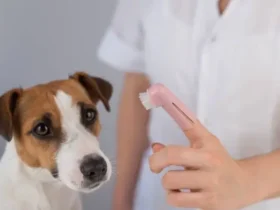Shedding is a natural part of a dog’s life cycle, but it can be a source of frustration for pet owners. Understanding why dogs shed and how to manage it effectively can help you keep your home cleaner and your dog healthier. This comprehensive guide will explain the reasons behind shedding, offer practical tips for controlling it, and provide advice on maintaining your dog’s coat.
Understanding Why Dogs Shed
Shedding is a natural process that occurs for several reasons. Here’s a closer look at why dogs shed and what factors influence this process:
1. Natural Coat Cycle
- Seasonal Changes: Most dogs shed in response to seasonal changes. In spring, they shed their heavier winter coat to prepare for warmer weather. Conversely, in fall, they may shed to grow a thicker coat for winter.
- Daily Shedding: Dogs continuously shed small amounts of hair throughout the year as part of their natural coat renewal process.
2. Breed-Specific Factors
- Double-Coated Breeds: Breeds like Huskies, German Shepherds, and Golden Retrievers have a double coat with a dense undercoat. These breeds tend to shed more heavily, especially during seasonal changes.
- Single-Coated Breeds: Breeds with single-layer coats, like Poodles or Maltese, shed less, but they still require regular grooming to manage loose hair.
3. Health and Diet
- Nutritional Deficiencies: A lack of essential nutrients, such as fatty acids or vitamins, can lead to excessive shedding. A balanced diet is crucial for maintaining a healthy coat.
- Skin Conditions: Issues like allergies, infections, or parasites can cause increased shedding and discomfort.
4. Stress and Environmental Factors
- Stress: Significant changes in your dog’s environment or routine, such as moving to a new home or the introduction of a new pet, can cause stress-induced shedding.
- Climate: Extreme temperatures or changes in humidity can affect shedding patterns, leading to more hair loss.
5. Age
- Puppies: Puppies may shed their baby coat as they grow, which can be a normal part of development.
- Senior Dogs: Older dogs might experience changes in their coat and increased shedding due to age-related factors.
How to Control and Manage Dog Shedding
While you can’t completely stop your dog from shedding, you can manage it effectively with the right approach. Here’s how to control shedding and maintain a cleaner home:
1. Regular Grooming
- Brushing: Regular brushing helps remove loose fur and reduces shedding. Use brushes appropriate for your dog’s coat type:
- Slicker Brushes: Good for removing loose fur and preventing mats.
- Deshedding Tools: Tools like the Furminator can help reduce shedding, especially for double-coated breeds.
- Bathing: Regular baths can help manage shedding by removing dead skin cells and loose fur. Use a dog-specific shampoo that is gentle on your dog’s skin.
2. Maintain a Balanced Diet
- High-Quality Food: Feed your dog a balanced diet rich in essential nutrients. Look for foods that include omega-3 and omega-6 fatty acids, which promote a healthy coat and reduce shedding.
- Supplements: Consider supplements like fish oil or biotin, as recommended by your vet, to support coat health.
3. Regular Vet Check-Ups
- Health Assessments: Schedule regular vet visits to check for any underlying health issues that may contribute to excessive shedding.
- Skin and Coat Care: Your vet can provide advice on skin conditions, allergies, or other factors that could be affecting your dog’s shedding.
4. Manage Environmental Factors
- Climate Control: Ensure your home is comfortable for your dog by maintaining a stable temperature and humidity level. Use air purifiers to reduce allergens and dander in your home.
- Reduce Stress: Minimize stress by maintaining a consistent routine and providing a stable environment for your dog.
5. Use Shedding Control Products
- Deshedding Shampoos: Special shampoos designed to reduce shedding can help manage loose fur and improve coat health.
- Lint Rollers and Vacuum Cleaners: Keep your home clean by using lint rollers to remove fur from furniture and vacuum cleaners designed for pet hair.
6. Implement Proper Coat Care
- Trim the Coat: Regular trimming can help manage shedding, especially for long-haired breeds. Professional grooming services can assist with this.
- Check for Mats: Regularly check and remove any mats or tangles in your dog’s coat to prevent further shedding and discomfort.
Tips for Dealing with Shedding in Your Home
Here are some additional tips to help manage shedding and keep your home clean:
- Cover Furniture: Use washable covers or throws on furniture to protect it from pet hair.
- Clean Regularly: Vacuum frequently and use a vacuum cleaner with a HEPA filter to remove pet dander and hair from floors and upholstery.
- Wash Pet Bedding: Regularly clean your dog’s bedding and any other areas they frequent to reduce the buildup of hair and dander.
Conclusion
Shedding is a normal part of a dog’s life, but with the right care and management strategies, you can minimize its impact on your home and your dog’s comfort. Regular grooming, a balanced diet, and proper health care are essential for controlling shedding and maintaining a healthy coat. By understanding the causes of shedding and implementing effective management techniques, you can ensure your dog stays happy and your home remains clean.
If you have concerns about your dog’s shedding or overall health, consult your veterinarian for personalized advice and solutions. With the right approach, you can enjoy a cleaner, more comfortable living environment for both you and your furry friend.
By applying these strategies, you can manage your dog’s shedding effectively and enjoy the benefits of a healthier, well-groomed pet.











Leave a Reply